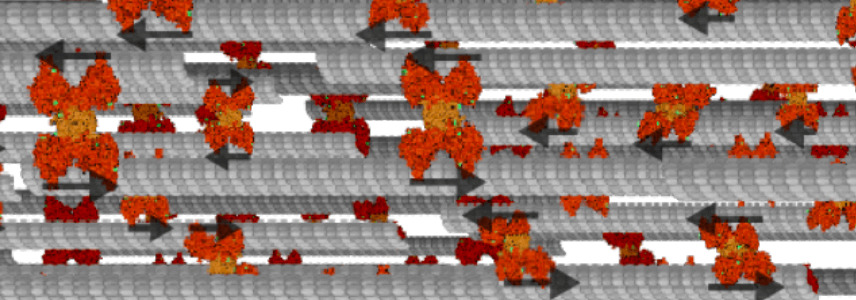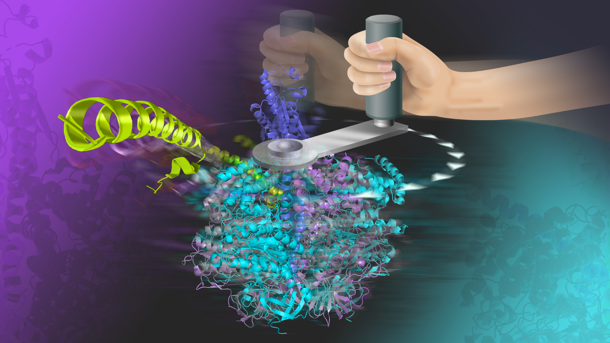2023-03-31 ハーバード大学

Microtubules, crucial components of cells’ cytoskeletons, are powered by protein motors (portrayed in red). Until now, the precise amount of energy they use to move has been unknown.
この手法は、細胞形状、動きなどを決定する細胞内の微小構造体のエネルギー使用を分析するのに使用される。今後は、感染症の診断や老化に伴う不妊症の治療にも応用される可能性がある。
この研究は、ハーバード大学の科学者たちによって進められ、米国国立科学アカデミー紀要に掲載された。
<関連情報>
- https://seas.harvard.edu/news/2023/03/unprecedented-look-biological-energy-sub-cellular-level
- https://www.pnas.org/doi/10.1073/pnas.2207662120
活性な細胞骨格物質におけるスケール間の散逸とエネルギー伝搬 Dissipation and energy propagation across scales in an active cytoskeletal material
Peter J. Foster,Jinhye Bae,Bezia Lemma,Juanjuan Zheng,William Ireland,Pooja Chandrakar,Rémi Boros,Zvonimir Dogic,Daniel J. Needleman,Joost J. Vlassak
Paulson School of Engineering and Applied Sciences Published:March 31, 2023
DOI:https://doi.org/10.1073/pnas.2207662120
Significance
While the flow of energy allows active materials to display rich emergent phenomena, such as self-organized flows, how much energy active materials use and how this energy propagates across length scales are not well understood. Here, we use picocalorimetry to measure the heat production rate of a microtubule active gel. By comparing the total rate of energy consumption (measured using calorimetry) with the rate of energy dissipation by the emergent flows (estimated from microscopy), we find that the energetic efficiency of this material is surprisingly low: Only approximately one-billionth of the system’s total energy consumption propagates to the scale of the emergent flows. These results highlight energetic efficiency as a key material property for the engineering of active materials.
Abstract
Living systems are intrinsically nonequilibrium: They use metabolically derived chemical energy to power their emergent dynamics and self-organization. A crucial driver of these dynamics is the cellular cytoskeleton, a defining example of an active material where the energy injected by molecular motors cascades across length scales, allowing the material to break the constraints of thermodynamic equilibrium and display emergent nonequilibrium dynamics only possible due to the constant influx of energy. Notwithstanding recent experimental advances in the use of local probes to quantify entropy production and the breaking of detailed balance, little is known about the energetics of active materials or how energy propagates from the molecular to emergent length scales. Here, we use a recently developed picowatt calorimeter to experimentally measure the energetics of an active microtubule gel that displays emergent large-scale flows. We find that only approximately one-billionth of the system’s total energy consumption contributes to these emergent flows. We develop a chemical kinetics model that quantitatively captures how the system’s total thermal dissipation varies with ATP and microtubule concentrations but that breaks down at high motor concentration, signaling an interference between motors. Finally, we estimate how energy losses accumulate across scales. Taken together, these results highlight energetic efficiency as a key consideration for the engineering of active materials and are a powerful step toward developing a nonequilibrium thermodynamics of living systems.



